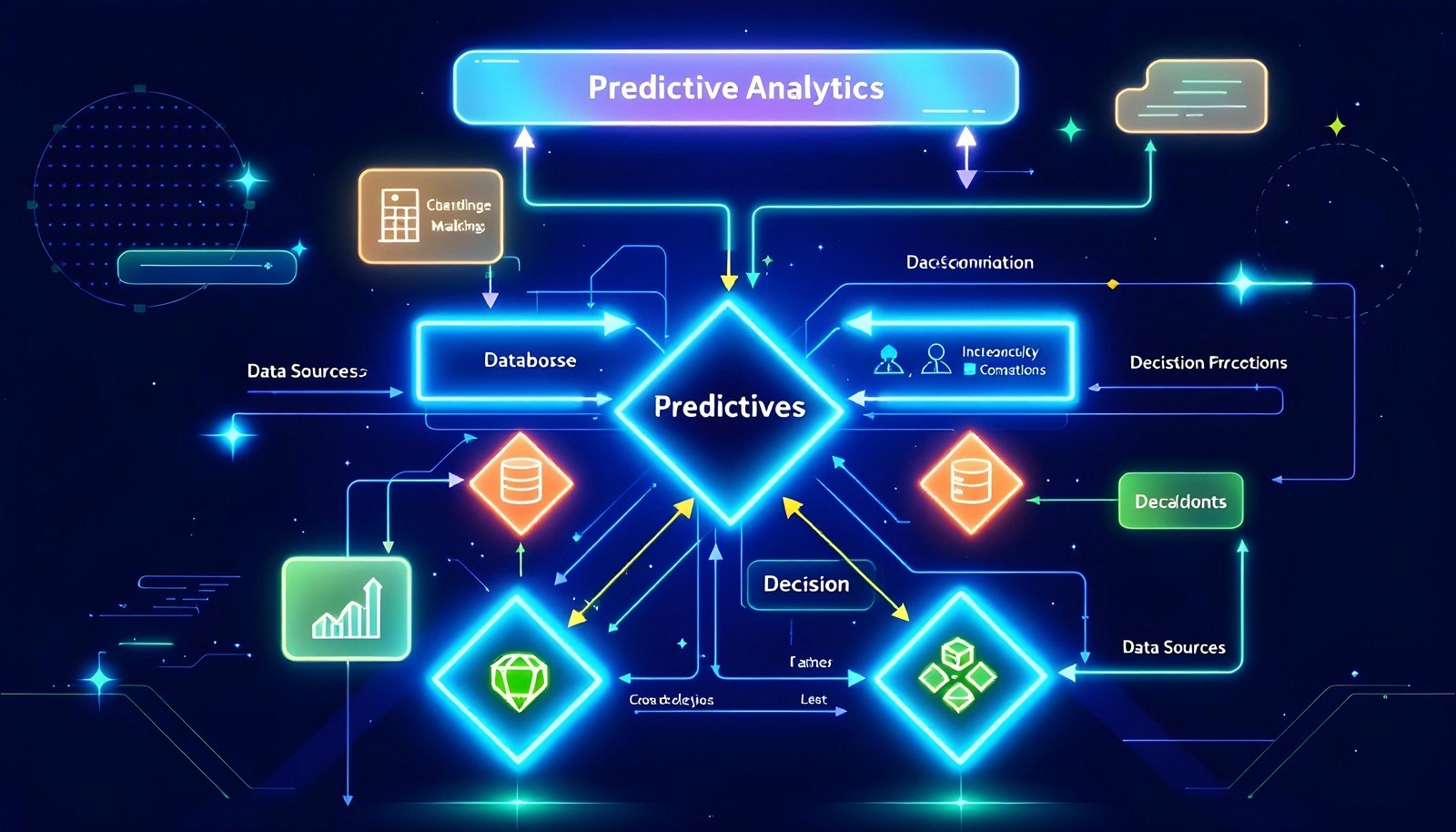Predictive Analytics

Quick Navigation:
- Predictive Analytics Definition
- Predictive Analytics Explained Easy
- Predictive Analytics Origin
- Predictive Analytics Etymology
- Predictive Analytics Usage Trends
- Predictive Analytics Usage
- Predictive Analytics Examples in Context
- Predictive Analytics FAQ
- Predictive Analytics Related Words
Predictive Analytics Definition
Predictive analytics refers to the use of statistical techniques, machine learning algorithms, and data mining to analyze current and historical data to make predictions about future events. It harnesses various models to uncover patterns and trends, enabling businesses and organizations to anticipate outcomes with a certain level of probability. This data-driven approach is commonly used to forecast consumer behavior, manage risk, and optimize operational processes by making informed, forward-looking decisions.
Predictive Analytics Explained Easy
Imagine you have a magic crystal ball that tells you what might happen tomorrow based on everything that’s happened in the past. Predictive analytics is like that, except it uses computers and lots of data to make educated guesses. It’s how your favorite video streaming service knows what shows you might want to watch next or how stores figure out what products you’re likely to buy soon.
Predictive Analytics Origin
The concept of predictive analytics has roots in statistical forecasting and has evolved alongside advancements in computing power and data collection techniques. The foundational practices were established in the early 20th century with the growth of statistics, but it wasn't until the late 20th and early 21st centuries that technological advancements allowed predictive analytics to become mainstream.
Predictive Analytics Etymology
The word “predictive” comes from the Latin word “praedictivus,” meaning “to foretell” or “to predict,” while “analytics” derives from the Greek word “analytikos,” meaning “pertaining to analysis.”
Predictive Analytics Usage Trends
Predictive analytics has seen a significant surge in use, particularly over the last decade. This is primarily due to the explosion of big data and advancements in artificial intelligence and machine learning. The integration of predictive models into everyday applications, such as financial forecasting, healthcare diagnostics, and customer behavior prediction, has made it an essential tool across industries. Organizations have adopted predictive analytics to enhance decision-making, reduce risks, and personalize user experiences.
Predictive Analytics Usage
- Formal/Technical Tagging: Data modeling, forecasting, statistical analysis, machine learning, risk assessment.
- Typical Collocations: Predictive model, data analysis, forecasting tool, machine learning algorithms, future trends.
Predictive Analytics Examples in Context
- Banks use predictive analytics to evaluate loan applicants’ creditworthiness and anticipate potential defaults.
- Online retailers leverage predictive analytics to recommend products to users based on their browsing and purchase history.
- Healthcare providers apply predictive analytics to identify patients at risk of developing chronic illnesses, allowing for early intervention.
Predictive Analytics FAQ
- What is predictive analytics?
Predictive analytics is a method of using data, statistical algorithms, and machine learning to predict future outcomes. - How is predictive analytics used in business?
Businesses use predictive analytics to forecast sales, optimize marketing strategies, manage inventory, and improve customer experiences. - What types of data are needed for predictive analytics?
Both structured (e.g., spreadsheets) and unstructured data (e.g., text from social media) can be used. - What industries use predictive analytics?
Common industries include finance, healthcare, retail, manufacturing, and sports. - What tools are commonly used for predictive analytics?
Tools like Python, R, SAS, and machine learning platforms like TensorFlow and scikit-learn are popular. - Is predictive analytics the same as machine learning?
No, predictive analytics uses machine learning as a component but focuses on future outcomes rather than learning patterns alone. - What is the difference between predictive and descriptive analytics?
Descriptive analytics explains what has already happened, while predictive analytics forecasts future outcomes. - What skills are needed to work in predictive analytics?
Skills include data analysis, programming (Python, R), and familiarity with statistical methods. - Can predictive analytics predict exact outcomes?
No, it provides probabilities and trends rather than absolute certainty. - What challenges are associated with predictive analytics?
Challenges include data quality, model accuracy, and ethical concerns about data privacy.
Predictive Analytics Related Words
- Categories/Topics: Data science, machine learning, forecasting, statistical analysis.
- Word Families: Predict, prediction, analytics, analyze, analyzed.
Did you know?
Predictive analytics played a pivotal role in the 2008 U.S. presidential election. Barack Obama’s campaign used advanced predictive models to optimize voter outreach, helping to target specific demographics and maximize voter engagement.
PicDictionary.com is an online dictionary in pictures. If you have questions or suggestions, please reach out to us on WhatsApp or Twitter.Authors | Arjun Vishnu | @ArjunAndVishnu

I am Vishnu. I like AI, Linux, Single Board Computers, and Cloud Computing. I create the web & video content, and I also write for popular websites.
My younger brother, Arjun handles image & video editing. Together, we run a YouTube Channel that's focused on reviewing gadgets and explaining technology.



Comments powered by CComment